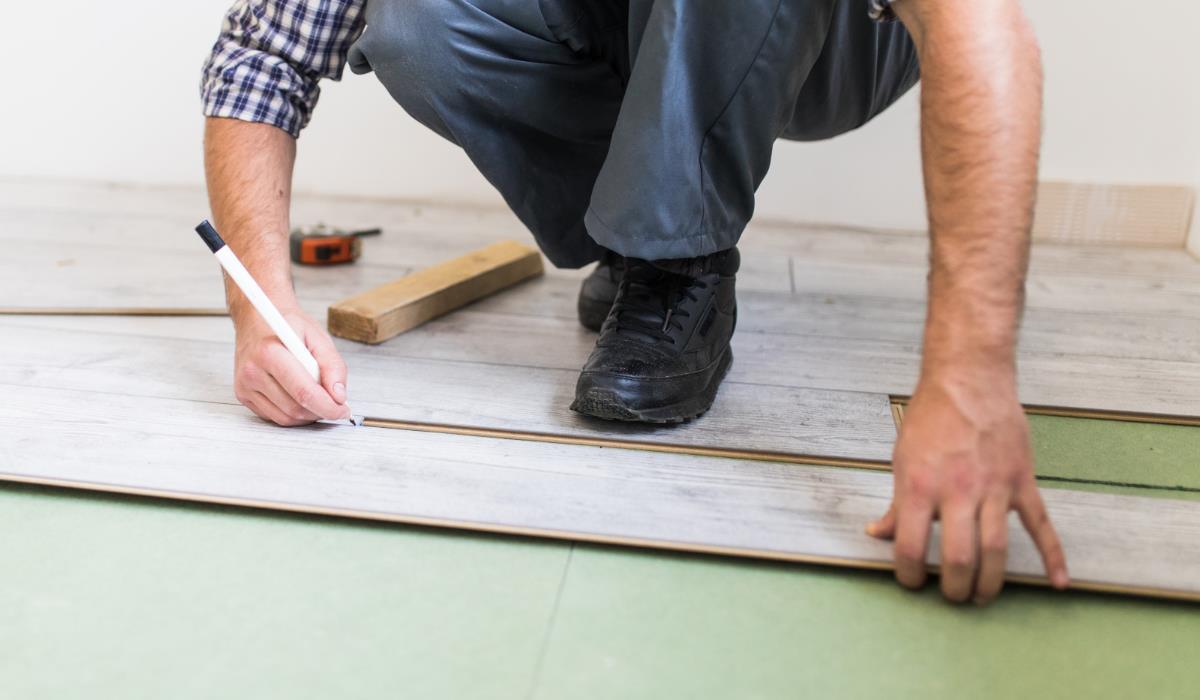Insulation foils are an important element in the construction of floor layers. Depending on the purpose of the room, its location and aesthetic and functional requirements, floor layers should provide the necessary load resistance. They must protect against heat escape and moisture penetration, suppress noise, and the top floor layer should guarantee long-term use. One of the elements of floor layers is often moisture insulation with the use of foil, which can also perform other functions.
Tip: In the case of construction foils, the thickness is selected depending on its intended use and exposure to possible damage. In general, foils with a thickness of 0.4-0.5 mm are used as a damp-proof insulation on a concrete substrate, and 0.2 mm thick is enough as a covering, e.g. on polystyrene. Construction foils are a wide and relatively easy to use building material that is indispensable when building floor layers.
Floor directly on the ground
In houses without a basement, the ground floor is directly in contact with the ground. It is therefore necessary to protect the floor layers against moisture penetration, as well as to reduce heat loss through the large surface of the floor. The substrate for the anti-moisture insulation must be smooth and even enough not to cause damage to sharp protrusions and recesses. The foil layer should be connected to the horizontal insulation of the walls along the entire perimeter as well as on the inner walls.
Standard intermediate floor
On most reinforced concrete ceilings, the so-called floating floor underlayments are laid. Consisting of sequentially laid layers – leveling, acoustic or thermal insulation and floor screed. Acoustic insulation is made of plates of special polystyrene (soft) called acoustic, 3-4 cm thick. In addition to acoustic polystyrene, you can use hard mineral wool boards with a thickness of 40 mm or special polyethylene foam with a thickness of 15-20 mm as floor insulation. They should be protected with foil against mortar penetration during screed pouring, and its thickness cannot be less than 4.5-5 cm.
Insulation foils and moisture and flooding
Construction foils used for damp-proof insulation and protective functions are usually large-size polyethylene covers with the most common thicknesses from 0.2 mm to 0.5 mm. Their width after unfolding from a wound roll can be 4-6 m, and the length reaches 20-25 m.
In the case of waterproofing, construction foils are used as an insulating layer during the construction of the ground floor or interfloor ceiling. Thanks to the films, the floor is protected from moisture that can penetrate from the ground or from other sources, which ensures long-term use and durability. Waterproofing is especially important in buildings without a basement, where the floor is in direct contact with the ground.
Ground floor

In the case of one-story floors, a concrete base is placed on a layer of leveling bedding. Then the damp insulation is laid. The foil layer should be combined with the horizontal insulation of foundation walls along the entire perimeter as well as on internal structural and partition walls. In the case of floors on ceilings, waterproofing is usually placed between the base layers under the floor. The configuration of the base layers depends on the intended use of the room, the raw condition of the ceiling and the type of floor covering.
Other uses of construction foil
Construction foils can also be used as acoustic, thermal and vapor barrier. In the case of sound insulation, special sheets of polystyrene or polyethylene foam are placed between the base layers under the floor. Then he covers it with an insulating foil to prevent mortar from penetrating when pouring the screed. Thermal insulation is usually placed between the underlays under the floor to prevent heat from escaping. Vapor barrier foil, on the other hand, is used in rooms under ceilings separating unheated attics.



